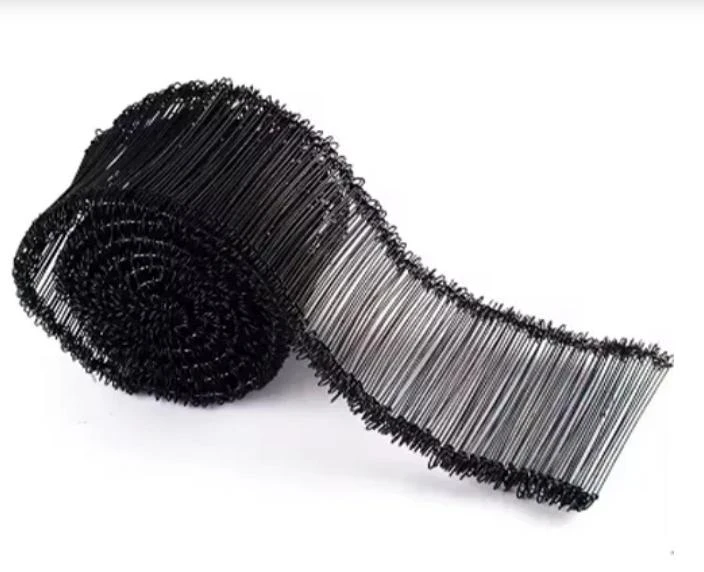-
 Phone:
Phone: -
 Email:
Email:

chain fence supplies
Chain Fence Supplies The Essential Guide to Choosing and Maintaining Your Fence
When it comes to securing your property, enhancing its aesthetics, or simply marking boundaries, chain link fencing provides an effective and versatile solution. Known for its durability and low maintenance, chain link fences are a popular choice for both residential and commercial properties. However, to maximize the benefits of a chain link fence, understanding the various supplies and materials available is crucial. In this article, we will explore chain fence supplies, their components, installation tips, and maintenance practices to help you make informed decisions.
Components of Chain Link Fencing
A basic chain link fence consists of several key components
1. Fabric The chain link fabric is the main part of the fence, typically made from galvanized steel. It comes in various heights, gauges, and coatings (like vinyl) to enhance weather resistance. The gauge indicates the wire thickness; a lower gauge means stronger, thicker wire.
2. Posts Posts are essential for a sturdy structure, as they support the fabric. There are three types of posts used in chain link fencing - Terminal Posts Installed at the corners and ends of the fence line, they hold the fabric and provide stability. - Line Posts Placed between terminal posts, these ensure the fence remains taut and in shape. - Top Rails Although optional in some designs, top rails add additional strength and stability to the fence structure.
3. Fittings and Hardware Various fittings are essential for securing the fabric to the posts and maintaining visibility. These include tension bands, ties, tension wires, and gate hardware. Make sure to choose high-quality, rust-resistant materials for longevity.
4. Gates If you're planning to have access points in your fence, consider the type of gate. Choices include swing gates, slide gates, and customized designs suitable for your yard's layout.
Choosing Chain Link Fence Supplies
When selecting supplies for your chain link fence, consider these factors
1. Purpose Determine the primary function of your fence—security, aesthetics, or boundary marking. For high-security areas, opt for thicker gauges and higher fences; for decorative purposes, consider colored or coated fabrics.
2. Material Quality Investing in high-quality galvanized or vinyl-coated chain link will provide better durability and resistance against rust and weather conditions. Always check the specifications, including warranty and lifespan.
3. Local Regulations Before installation, check local building codes and regulations. Some areas may have height restrictions or require permits for fencing installation.
chain fence supplies

Installation Tips
Installing a chain link fence can be a DIY project, but proper planning is key to success
1. Measure the Area Accurately measure the length where the fence will be installed to determine how much material you will need.
2. Mark Post Locations Use stakes and string to outline the area, marking where the posts will go, keeping in mind spacing (typically between 5 to 10 feet apart).
3. Dig Post Holes Each post should be set in concrete for stability. Dig holes large enough to accommodate the post and at least one-third of the post length.
4. Install Posts Set the posts in place, ensuring they are plumb and have adequate depth, and fill the holes with concrete to secure them.
5. Attach Fabric Starting at one terminal post, unroll the chain link fabric and begin attaching it, using tension bands and caps at the terminal posts for stability.
Maintenance of Chain Link Fences
One of the greatest advantages of chain link fences is their low maintenance needs. However, periodic inspections and care will extend the life of your fence. Here are some tips
1. Regular Inspections Check for rust, loose fittings, or damage to ensure that it remains secure and functional.
2. Cleaning Occasionally clean the fabric with a mixture of water and mild detergent. Avoid harsh chemicals that could damage the galvanized coating.
3. Repairs Address issues promptly. Replace any damaged sections and reinforce areas showing signs of wear.
In summary, chain link fencing offers a functional and affordable solution for various fencing needs. By understanding the available supplies, proper installation techniques, and maintenance practices, you can ensure a long-lasting and effective boundary for your property. Whether it's for security, privacy, or aesthetics, a well-planned chain link fence can enhance the value and safety of your home or business.
-
Wire Mesh for Every Need: A Practical SolutionNewsJul.25,2025
-
Steel Fences: Durable, Secure, and Stylish OptionsNewsJul.25,2025
-
Roll Top Fencing: A Smart Solution for Safety and SecurityNewsJul.25,2025
-
Cattle Farm Fencing Solutions for Maximum SecurityNewsJul.25,2025
-
Affordable Iron Binding Wire SolutionsNewsJul.25,2025
-
Affordable Galvanized Wire SolutionsNewsJul.25,2025
-
Wire Hanger Recycling IdeasNewsJul.25,2025








